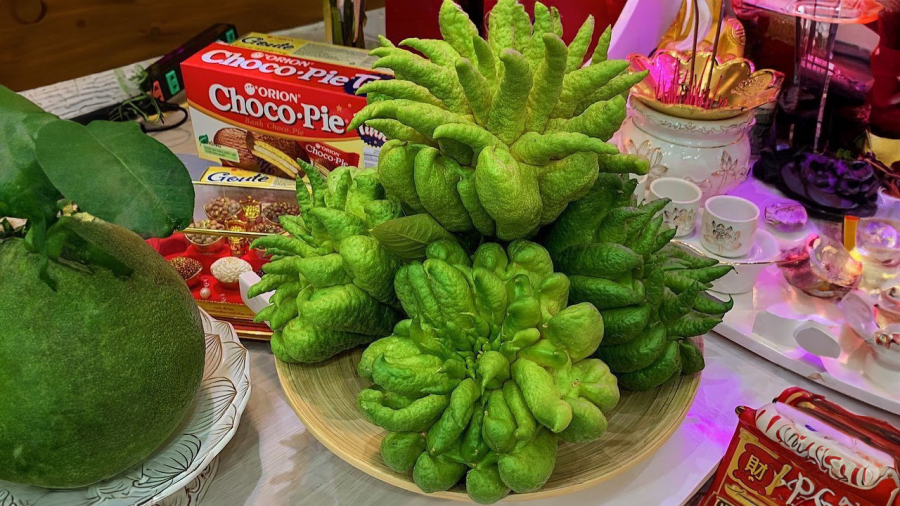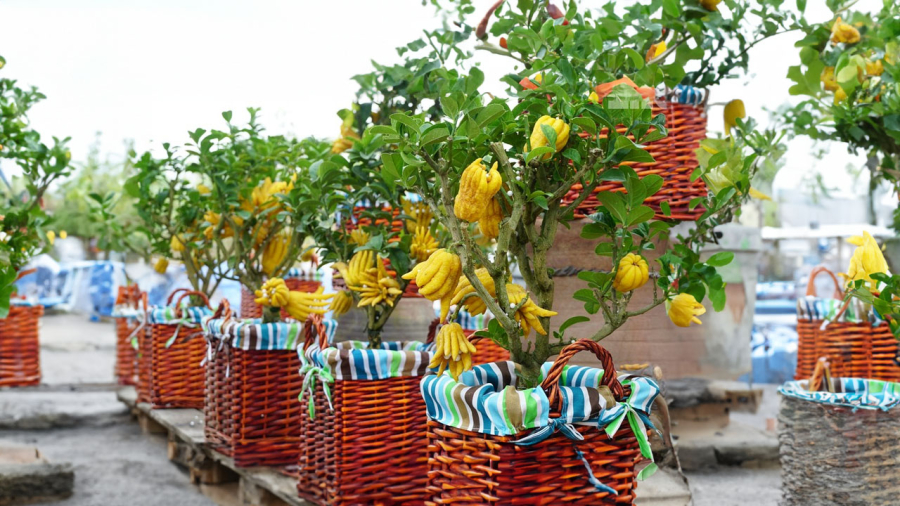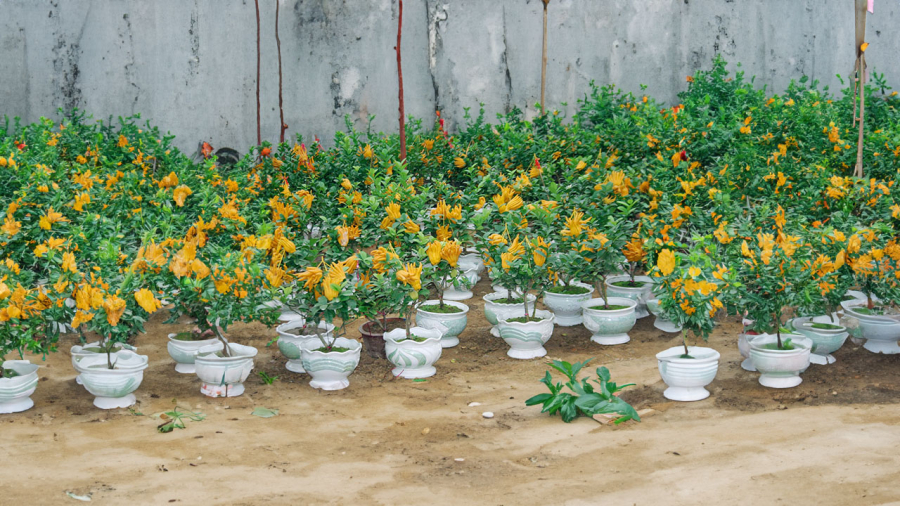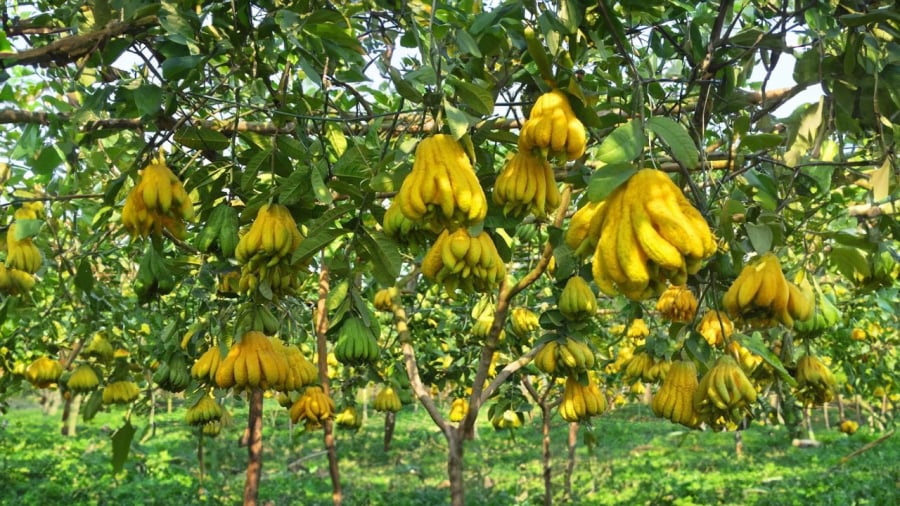Buddha’s hand is a type of fruit that has become popular for many people to use when offering incense, especially in Hanoi. The scientific name of Buddha’s hand is “Citrus medica var. Sarcodactylis” and it also means “Buddha’s hand” in English. Buddha’s hand is a type of tree that originated from India.

The meaning of Buddha’s hand
When young, Buddha’s hand has a green color, but as it ripens, it turns yellow. The essential oil of Buddha’s hand has a fragrance similar to grapefruit peel. Besides being used for incense, Buddha’s hand can also be used as a medicinal herb. Placing Buddha’s hand in the house will create a relaxing and pure fragrance, dispelling negative energy. Buddha’s hand can be placed on the fruit tray or arranged in a separate dish on the altar as an offering to Buddha and the ancestral spirits.
According to folklore, Buddha’s hand brings about good luck, peace, prosperity, protection from evil spirits, and wealth. Buddha’s hand plants are seen as a symbol of Buddha’s hand, providing embrace and protection to keep away evil spirits and bring good luck, convenience, and fulfillment.

Should you plant Buddha’s hand in front of your house?
With its auspicious meaning, Buddha’s hand can be planted in front of the house, on the balcony, or displayed indoors. Displaying and planting Buddha’s hand inside the house is a way to show respect to Buddha, preserve the spiritual power of Buddha, and protect the ancestors in the house for longer, bringing luck, peace, and warmth to the family. The fragrant flowers of Buddha’s hand create a relaxing and refreshing space. The roots, stems, and leaves of Buddha’s hand can be used to treat diseases, similar to grapefruit, orange, and lemon trees.
During the Lunar New Year, Buddha’s hand can be displayed in the house as a decorative plant. After the Lunar New Year, you should take the plant outside to let it grow.

How to plant Buddha’s hand
Buddha’s hand is usually propagated by cutting, budding, or grafting. It is recommended to buy the seedlings from a nursery instead of grafting them yourself.
Buddha’s hand can be planted in pots or in the ground. When planted in the ground, the tree can reach a height of 2-2.5m. Buddha’s hand flowers in early March and bears fruit in autumn. The fruit can last for several months until spring. In March-April, Buddha’s hand produces male flowers, resulting in small fruit. In June-July, female flowers appear, producing large, beautiful fruits.
Buddha’s hand should be planted in a place with plenty of light, hot and humid conditions, and without extreme cold.

To take care of Buddha’s hand, you should pay attention to:
Water drainage: Buddha’s hand cannot tolerate waterlogging, so drainage is essential when planting the tree. If planting in the garden, ensure that the soil elevation is leveled and construct a mound about 0.3-0.8m high and 0.8-1m wide. If the ground slope is less than 5%, there is no need to mound. Buddha’s hand is a woody plant, so watering should be done according to the season. In hot summer weather, which has quick water drainage, water should be applied in the morning once daily. In humid or cool weather, water every 3-4 days. When planted in pots, more attention is needed for watering, as pots drain water faster and dry out more quickly.
Temperature: Buddha’s hand prefers hot and humid climates and is not frost-resistant. The recommended temperature range is from 22-26oC. Therefore, on cold winter days, it is necessary to keep the tree warm. If planted in pots, the pots can be moved indoors or protected from the cold.
Soil: Buddha’s hand prefers slightly acidic soil with a pH range from 5.5-6.5, mixed with sand and ashes. This will help reduce alkaline levels and maintain proper soil moisture.
The information provided is for reference only.



































